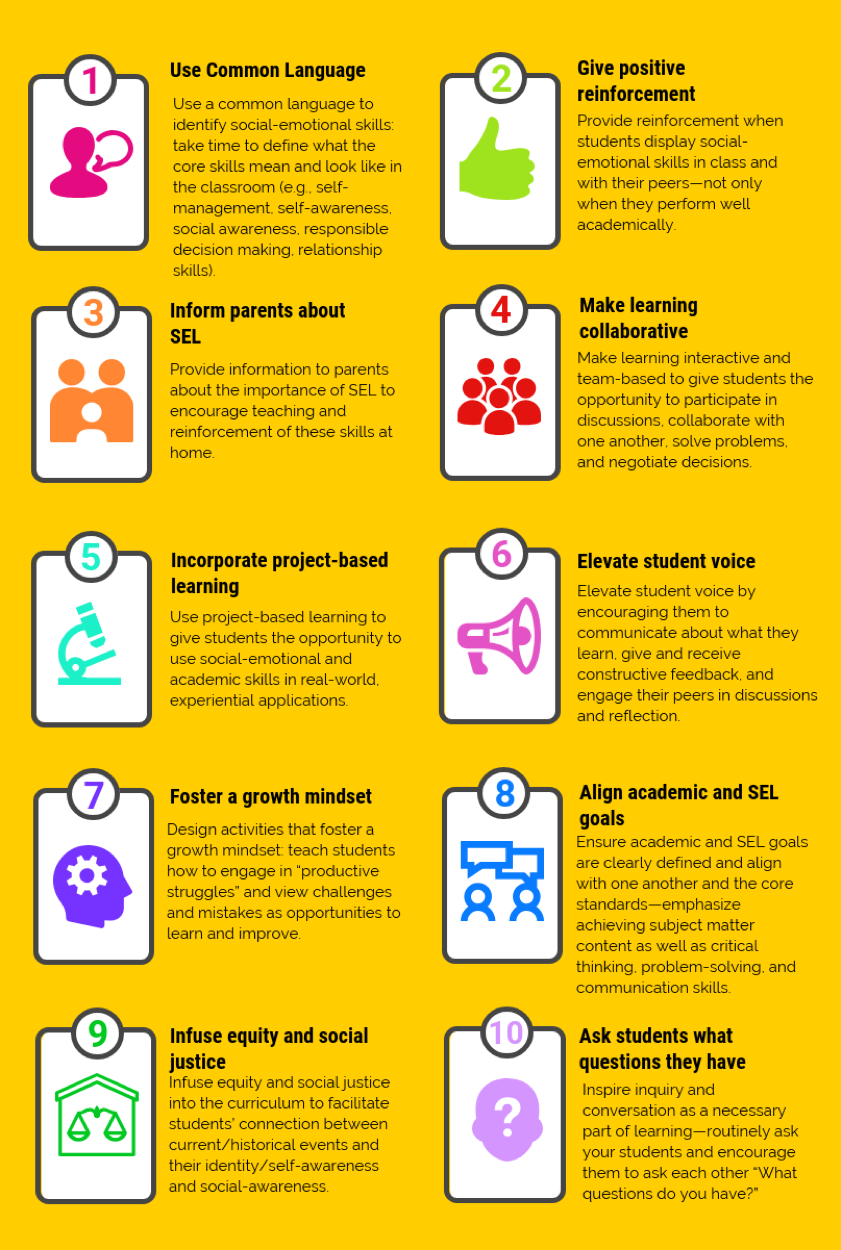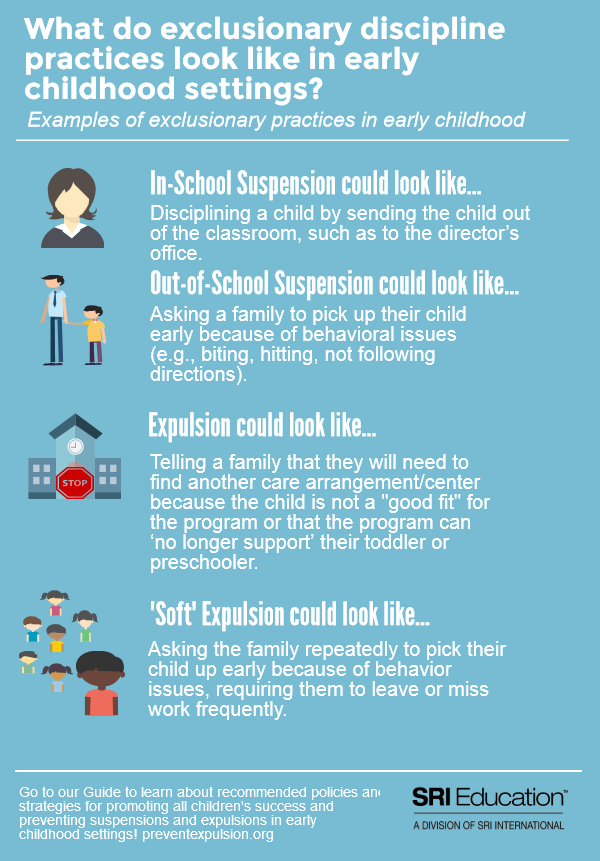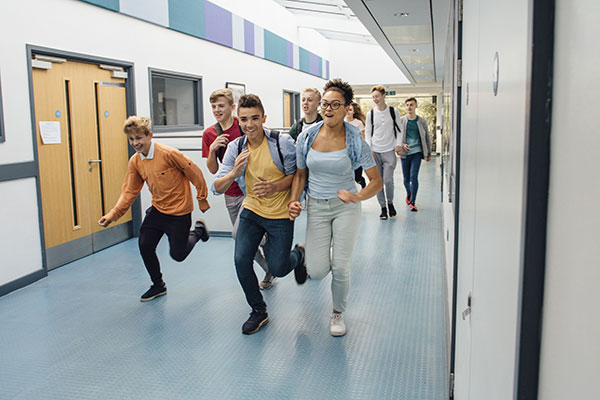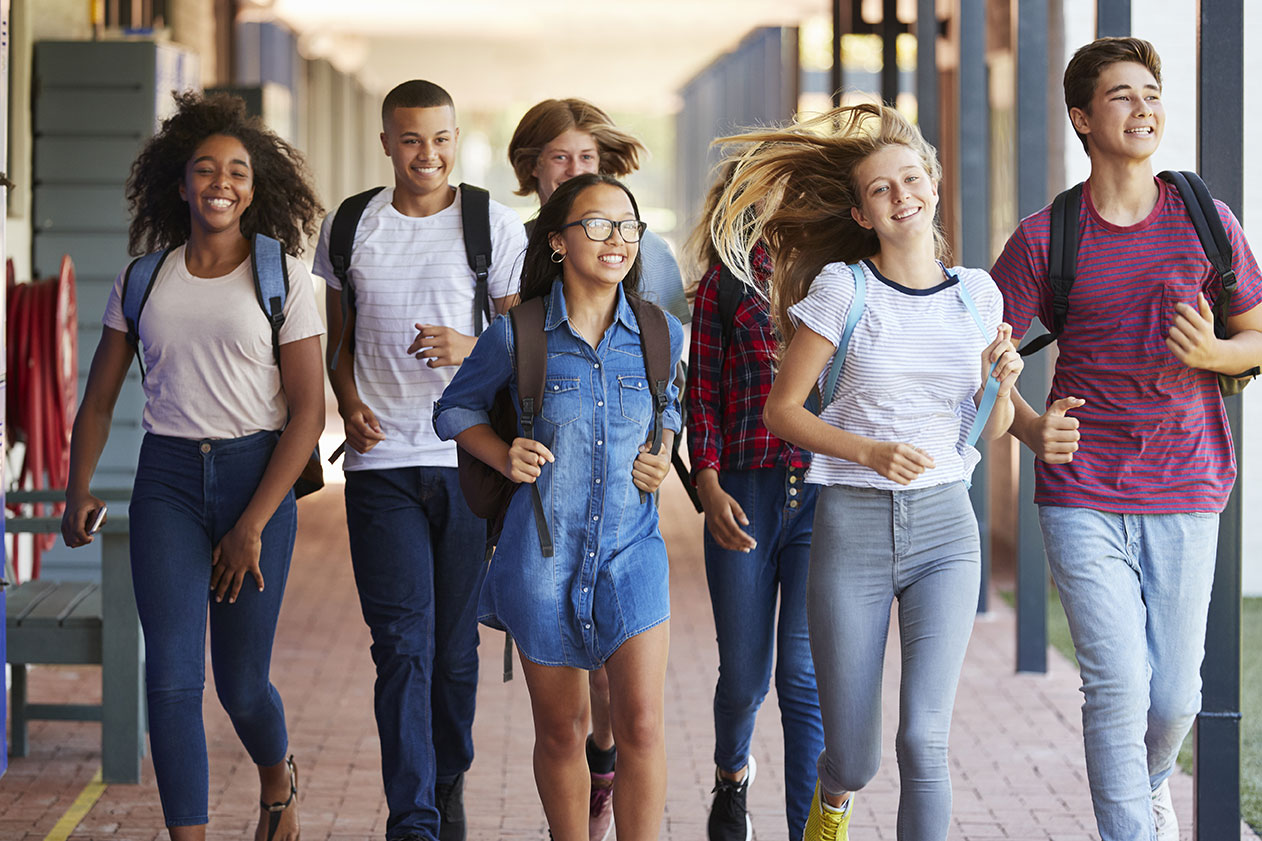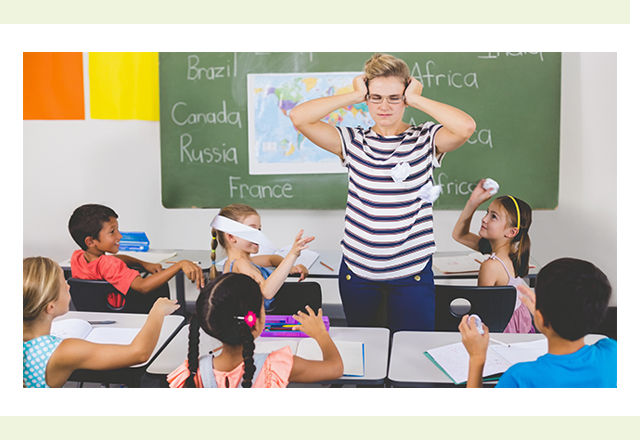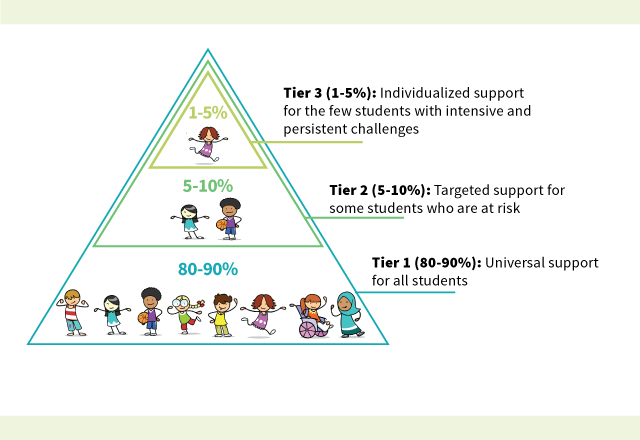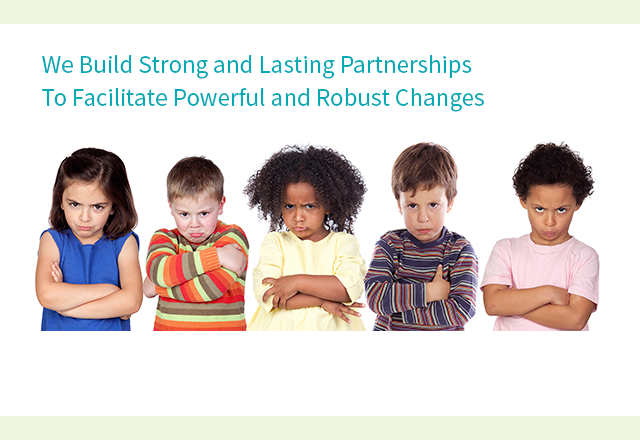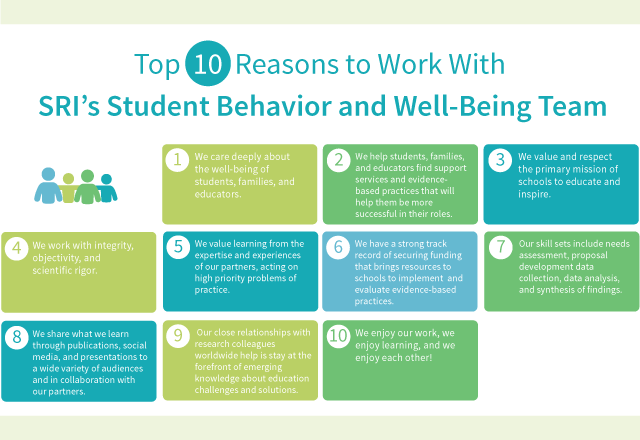Although most teachers recognize the importance of teaching social-emotional skills, many are also concerned about having time to fulfill their other responsibilities. Here we highlight one approach to teaching social-emotional skills in the classroom: incorporating social-emotional learning (SEL) into everyday academic instruction.
In state-funded preschools, children are expelled at 3 times the rate of K-12 students, and private preschool programs expel children at more than 13 times the rate of K-12 students. Our researchers have developed an interactive guide with recommended policies and practices to support early education program leaders in reducing and preventing suspensions and expulsions.
Students learn best when a school establishes clear and consistent school-wide expectations for behavior. Establishing school-wide rules and routines can help prevent challenging behavior or negative incidents from occurring in the first place. Foundations is one example of a program that addresses school climate and safety by promoting positive discipline policies.
We were presenting to a group of teachers about our project examining the effects of a group-based intervention for middle schoolers experiencing traumatic stress. I was describing the effects of trauma on students’ academic performance when a teacher stood up and loudly exclaimed, “But what about OUR trauma? Who is helping US?”
Research has shown that a positive school climate is greatly beneficial for both students and educators. A positive school climate includes three main components: Engagement, Safety, and Environment. School climate measures can help educators, parents, and the community understand perceptions, set appropriate goals, identify priorities, and make decisions.
To successfully navigate their school and home lives, students need more than just academic skills. Learning social-emotional skills can benefit all students. Social problem-solving is one social-emotional skill that can help all students in a classroom learn to better manage their emotions and behaviors, cooperate and communicate with peers, and make safer, more responsible decisions.
More than one of every five students has, or is at risk for, an emotional or behavioral disorder which can adversely affect learning and relationships. We study several types of school-wide and classroom-based programs to support students with emotional, social, and behavioral issues, and these are the most common types that we study…
Our team works with state and local education agencies to select, implement, and evaluate programs that meet their high priority education needs. Whether you’re a school leader or teacher, an intervention developer, or a funder looking to invest in effective behavior management and socioemotional interventions, you’ll find a variety of benefits of partnering with us.
In this first blog entry, we introduce our research team and describe why we love our work so much. Our team of researchers, evaluators, and technical assistance providers brings a wealth of expertise, with a common emphasis on the social and emotional well-being of children from socioeconomically disadvantaged backgrounds.

